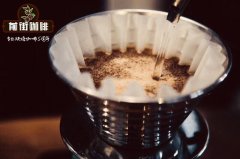The characteristic story of Costa Rican coffee producing area introduction to the flavor and taste of Costa Rican red honey coffee beans

Professional coffee knowledge exchange more coffee bean information please follow the coffee workshop (Wechat official account cafe_style)
Costa Rica is a republic in Latin America, bordering Panama and Nicaragua on the north and south of the country (both very famous coffee bean producing areas).
Compared with most coffee-producing areas in Africa, Costa Rica has no obvious advantages in terms of altitude and climate. Although Costa Rica has been growing coffee since 1729, coffee beans were sold at a low price as a blend of Italian coffee.
In recent years, in order to increase the added value of coffee exports, the Costa Rican government has made great efforts to develop high-quality coffee. In order to encourage coffee farmers, the local government has also set up a "coffee trust fund". It is used to help coffee farmers with difficulties to tide over difficulties and grow high-quality coffee. As a result, the relatively complex honey treatment has become the mainstream of Costa Rican coffee beans.
Coffee beans are actually the seeds of coffee fruit. Your favorite coffee drinks are made from the seeds of this red or yellow fruit.
However, before the coffee beans are roasted, the coating layer such as the skin and pulp of the coffee beans must be removed, and then the coffee beans are dried to a moisture content of about 11%. The two commonly used coffee treatment methods are washing and tanning. The water washing method is to soak the coffee fruit in water and rinse off the peel and pulp with water. The sun drying method is to dry the coffee fruit in the sun, and then use a machine to remove the skin and pulp, and so on.
The honey treatment law combines these two methods. Now remove the pericarp and retain part of the pectin outside the coffee beans to dry. Between sun washing and washing, it can also be subdivided into yellow honey, red honey and black honey.
Remove the floating fruit, scrape off the pulp and leave pectin like washing, and then the process of drying is the most exquisite part of honey treatment. Make use of the difference in temperature, humidity and pressure between day and night to make the honey of pectin sour and sweet inside the coffee beans, always turn over to avoid excessive fermentation. After that, the parts that contain silver sheepskin outside the skin are scraped off. Honey treatment gives beans more and richer flavor than washing, and much less defects than sun-dried beans. But it takes a lot of work and skills.
According to the amount of remaining pectin meat, it is divided into white, yellow, red and black honey treatments. The lighter the color is, the less pectin is retained. The white honey retains 15% of the pectin flesh, the yellow honey retains about 25%, and the red honey retains about 50%. However, the black honey drunk today retained 80% of the pectin flesh. The more pectin meat retained, the higher the sweetness of the coffee beans as a whole, the less pectin flesh is retained, and the higher the cleanliness of the taste.
Knowledge: "Arabica" is not synonymous with good coffee, even if it is Arabica, there are hierarchical differences.
In short: Qianjie is a coffee research hall, happy to share the knowledge about coffee with you, we share unreservedly just to make more friends fall in love with coffee, and there will be three low-discount coffee activities every month. The reason is that Qianjie wants to make more friends drink the best coffee at the lowest price, which has been Qianjie's tenet for 6 years!
END
Important Notice :
前街咖啡 FrontStreet Coffee has moved to new addredd:
FrontStreet Coffee Address: 315,Donghua East Road,GuangZhou
Tel:020 38364473
- Prev

Does Kenyan coffee taste sour? why can Kenyan coffee feel its unique aroma?
Professional coffee knowledge exchange more coffee bean information please follow the coffee workshop (Wechat official account cafe_style) front street-Kenya Coffee introduction actually the history of growing coffee beans in Kenya is only one hundred years ago. In the 20th century, Kenya began to develop the coffee industry on a large scale under the leadership of British and German colonists. Today, the average area of coffee production units in Kenya
- Next

Characteristics of Guatemalan Coffee Flavor Organic Sour and Sweet of Guatemala Atilan Coffee volcanic area
Professional coffee knowledge exchange more coffee bean information please follow the coffee workshop (Wechat official account cafe_style) front street-Guatemala Attland introduces the Republic of Guatemala referred to as Guatemala. A presidential republic in Central America, located in the south of the North American continent, northwest of Central America, west and north with Mexico, northeast and Belize, southeast and Honduras
Related
- Beginners will see the "Coffee pull flower" guide!
- What is the difference between ice blog purified milk and ordinary milk coffee?
- Why is the Philippines the largest producer of crops in Liberia?
- For coffee extraction, should the fine powder be retained?
- How does extracted espresso fill pressed powder? How much strength does it take to press the powder?
- How to make jasmine cold extract coffee? Is the jasmine + latte good?
- Will this little toy really make the coffee taste better? How does Lily Drip affect coffee extraction?
- Will the action of slapping the filter cup also affect coffee extraction?
- What's the difference between powder-to-water ratio and powder-to-liquid ratio?
- What is the Ethiopian local species? What does it have to do with Heirloom native species?

